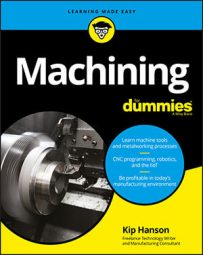- Having your eye scraped to remove tiny bits of metal that rusted in place while you were sleeping is . . . memorable. The way to avoid it is pretty obvious. Always wear your safety glasses, and use the dorky-looking ones with side shields. If you're grinding, wear a face shield. Failure to do so may give you the once-in-a-lifetime opportunity to learn Braille.
- It's not like construction work, but machinists often need to lift heavy objects such as vises and chucks. Dropping one on your foot will likely leave you unable to play on the company softball team or bowling league. If you're not wearing steel-toed boots, you're asking for trouble. And if you're wearing tennis shoes, just go home.
- If you wear gloves while working on rotating machinery, you might end up like Ed, who attempted to deburr some parts in a drill press while wearing heavy welding gloves. The resulting injury, ironically enough, is called degloving, whereby a large piece of flesh is separated from the surrounding area — in Ed's case, it was the entire end of his finger. 'Nuff said.
- What? Say that again? Hearing loss is serious stuff. Noisy bar feeders have become much quieter since the author's old days on the shop floor. Still, even the most sedate machine shops aren't exactly public-library quiet. If you'd like to hear the laughter of your grandchildren, the wind lifting the maple leaves on a summer afternoon, and your spouse nagging you to change the channel when you're old and gray (maybe not that), always wear ear protection around metalworking machinery.
Another dumb idea is removing safety guards from equipment, or not locking out the electrical panel before performing preventative maintenance — best case, it could earn you the nickname "Sparky," but it might just leave you dead. If your shop isn't equipped with mist collectors, talk to your boss. If that doesn't work, find a new place to work.
The Occupational Safety and Health Administration (OSHA) is responsible for worker safety in the United States. It's earned an unfavorable but undeserved rap over the years for its tendency to make surprise safety visits, whereupon everyone in the shop runs around replacing machine guards and putting on safety glasses. Don't be like these shops. At the time of this writing, there's a marquee on the OSHA website listing worker fatalities so far this year, of which there are 4,500 annually, on average.
That's a lot of unnecessary heartache and loss. If you're serious about safety, reach out to OSHA, ask what should be done to keep employees safe, and inquire about the agency's Safety and Health Achievement Recognition Program (SHARP). It's an easy way to keep everyone safe.
